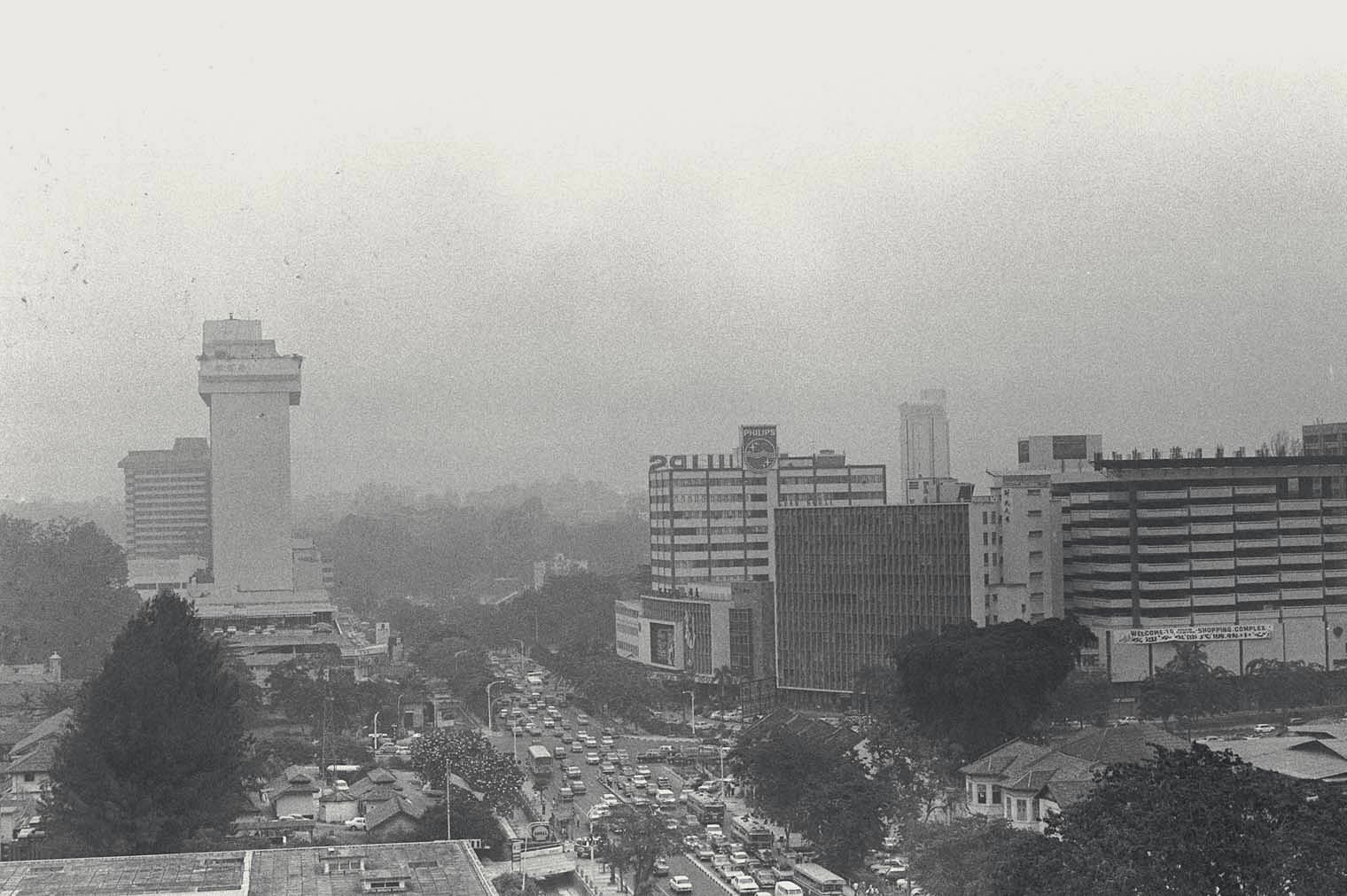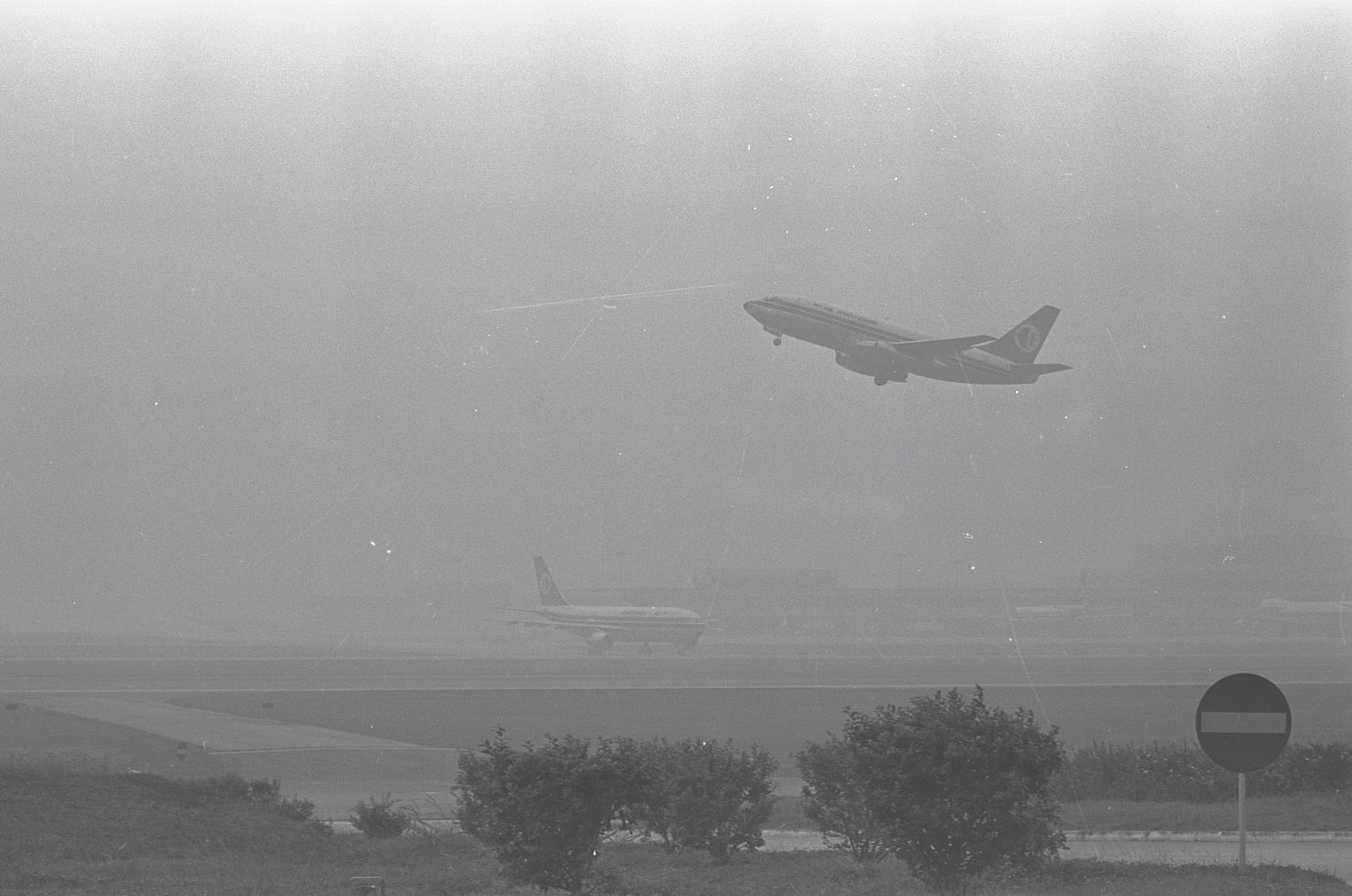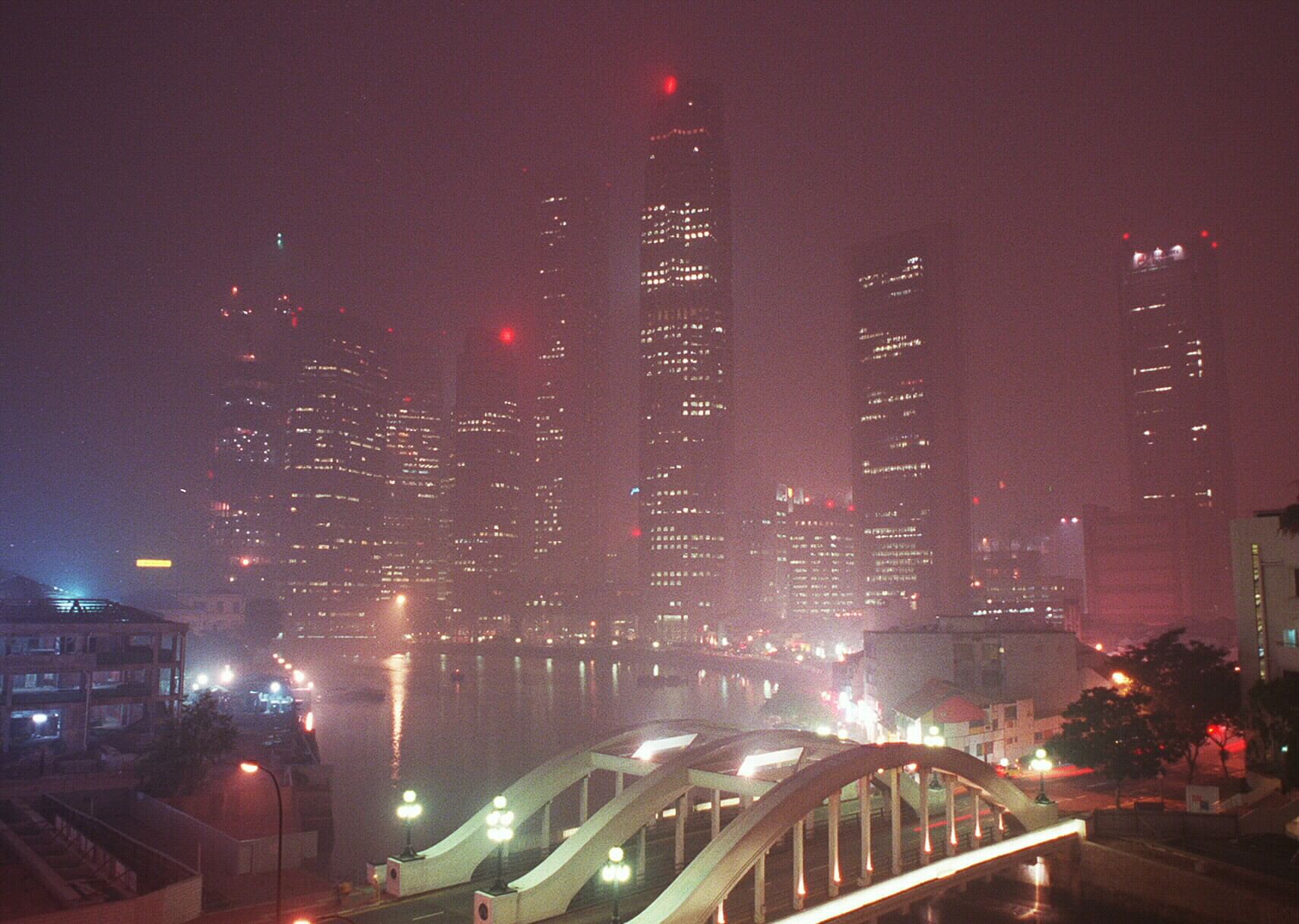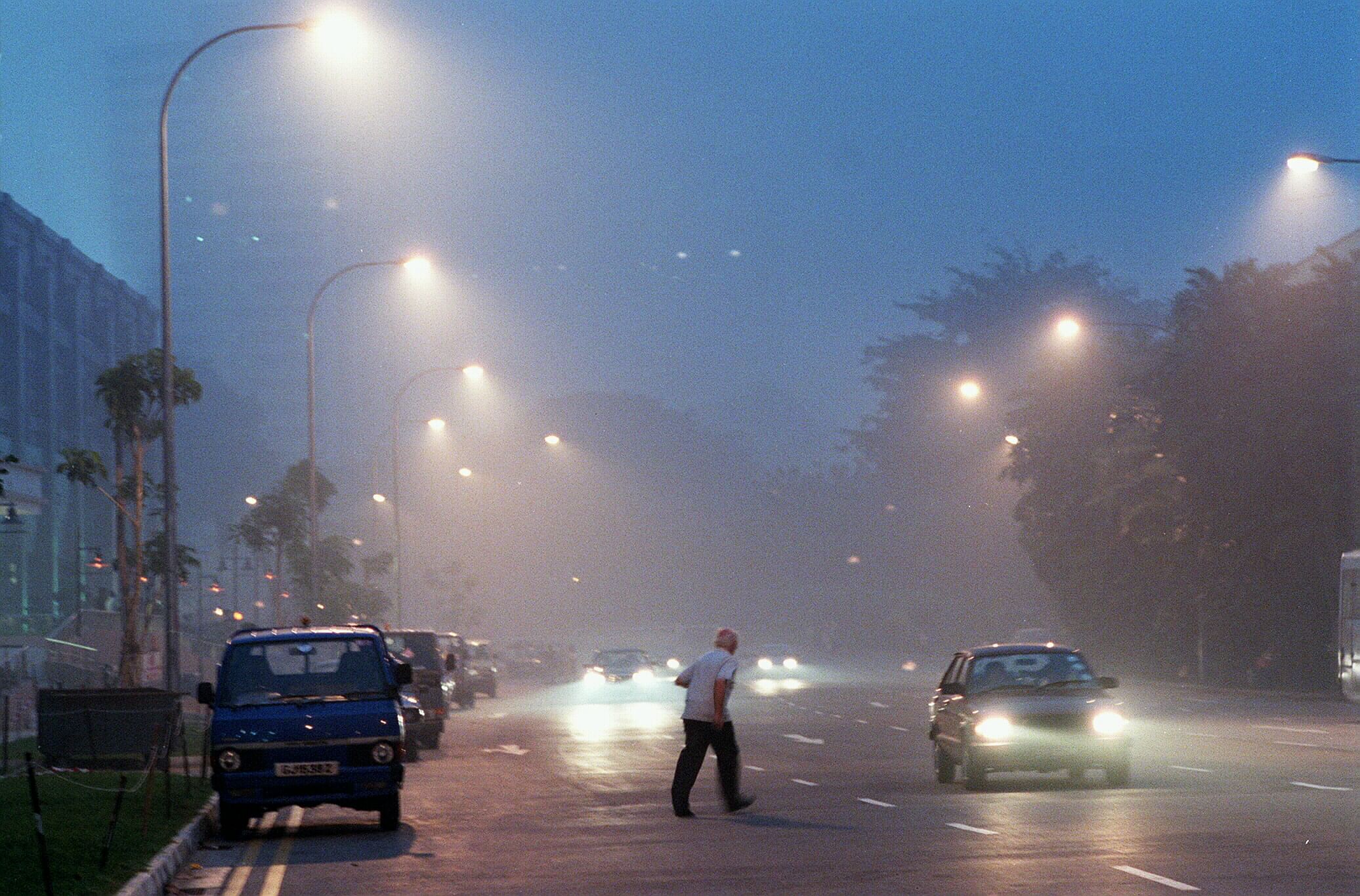SINGAPORE - A prolonged spell of haze has affected Singapore this year, with forest fires in neighbouring Indonesia contributing to the hazy conditions over the past month and a half.
Air quality also reached hazardous levels in late September, which resulted in the unprecedented closure of all primary and secondary schools on Sept 25.
But the haze is not new - records show that the issue has plagued Singapore from as far back as 1972.
The Straits Times delves into its archives for a look at some of the more prominent haze events.
In the 1970s

Hazy conditions first surfaced at the start of October 1972 and got progressively worse, with every part of Singapore "fog-bound" by 9pm on Oct 13. Visibility was so poor that motorists had to drive with full headlights even on brightly-lit streets. The haze was blamed on local land cultivation habits around Indonesia's Palembang.

A mysterious red haze, which caused the sun to turn orange, was reported on Feb 20, 1975, over a large area in Singapore. It was attributed to smoke and ash particles from a fire in Johor Baru, said to have been caused by jungle clearing work for land development.

On Oct 27, 1977, Singapore was blanketed in a smoky haze that was reportedly 366m high, which was probably blown in from forest fires raging in Sumatra. Towering skyscrapers could hardly be seen from short distances, owing to the poor visibility.
In the 1980s

The worst haze in 30 years in Singapore, coupled with mist, reduced visibility to less than 1km in the early morning of April 25, 1983. The main cause was suspected to be primarily forest fires originating from Kalimantan and central Sumatra.
Forest fires in Kalimantan were again the culprit when the haze reared its head on Sept 19, 1987. Many tall buildings and highrise flats were "lost in a mass of grey" as visibility was reduced to between 2-3km from the usual 10-15km.
In the 1990s

The decade was marked by two significant regional summits where Asean officials gathered to discuss transboundary pollution, resulting in the 1995 Asean Cooperation Plan on Transboundary Pollution and the 1997 Regional Haze Action Plan.
On Sept 18, 1997, the Pollutant Standards Index (PSI) hit an all-time high of 226 at 10pm, with visibility plummeting to a few hundred metres in the worst-hit western part of Singapore.

The next day, the Environment Ministry outlined a haze action plan, which involved shutting down schools and sports complexes should the PSI cross the 300-point mark. The economic cost of the haze that year, which coincided with the Asian Financial Crisis, was estimated at US$300 million (S$428.3 million).
In the new millennium

The haze proved to be a perennial issue for Singapore in the 2000s, but panic ensued in 2013 when the three-hour PSI hit a record 401 on June 21. Long queues formed at pharmacies and shops selling the N95 mask, although stop-work orders and closure of schools did not materialise as the 24-hour PSI did not reach hazardous levels.

Those events were superseded in September 2015, when the 24-hour PSI crossed the hazardous mark on Sept 24. The Ministry of Education proceeded to close all primary and secondary schools on Sept 25, while the Government announced a slew of measures to help the more vulnerable citizens. The situation prompted the Sports Hub to suspend activities at all its outdoor venues; major fast food chains such as McDonald's also halted their delivery services.


